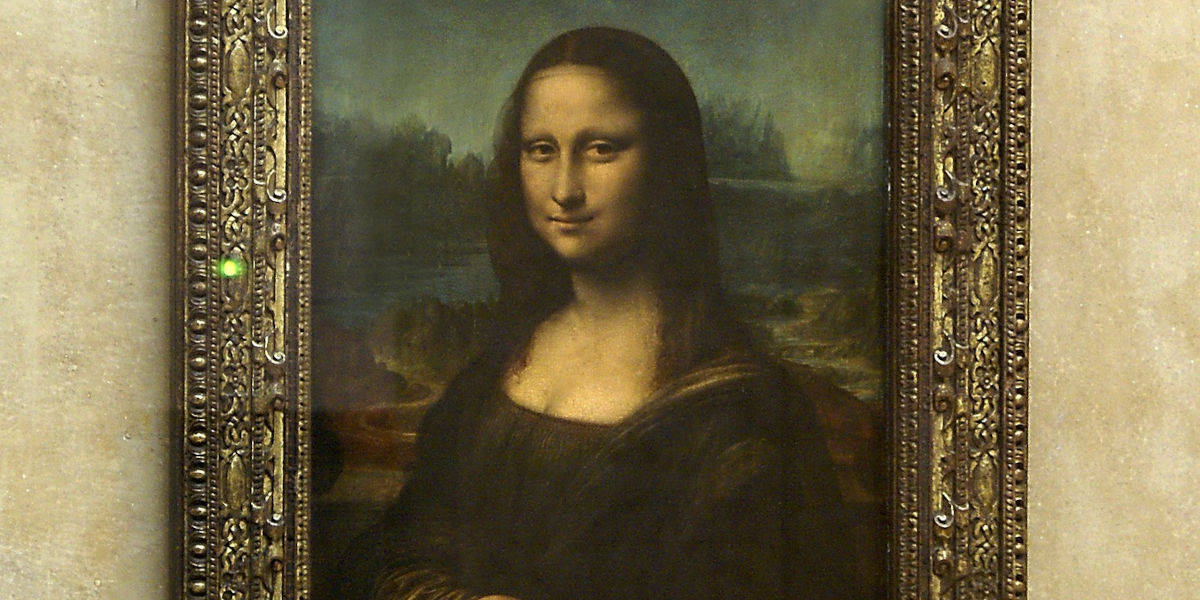Leonardo da Vinci, one of the greatest minds in human history, merged his multifaceted genius into his artwork, leading to creations that have provided ages of discussion, study, and admiration. Amongst them, perhaps none has stirred up such a whirlwind of fascination as the Mona Lisa. With her enigmatic smile, she has been the center of intrigue and theorization for centuries. From seemingly secretive aspects of her attire to the mystical landscape behind her, the Mona Lisa’s quietly mysterious persona has given rise to many theories, making her a captivating subject in the domain of art and art history.
Secrets of the Mona Lisa
The allure of the Mona Lisa lies not merely in her beauty, but largely in her ambiguity. The question that arises is - why is the Mona Lisa so famous? The answer resides in part to the whispers of hidden messages and secrets trapped within the oil on poplar panel. Leonardo da Vinci was not just a gifted painter, but an inventor, scientist, mathematician, writer, and musician. His breadth of knowledge suffuses his art, making each masterpiece, such as the Mona Lisa, a complex tapestry of cryptic clues waiting to be unraveled.
Da Vinci was known for his use of allegory and symbolism in his paintings. Critics and scholars have grappled with the enigmatic aspect of Mona Lisa's expression, her pose, and the background scenery which all contain subtleties that stand testament to the artist's genius. Whether it is the veil on her dress suggesting her maternity status or the winding road behind recalling one's journey to salvation - the Mona Lisa is a masterpiece bound in allegory.
Mona Lisa Hidden Messages
Speculations about hidden messages within the Mona Lisa are rife, with some going so far as proposing that she is actually a personification of the artist himself. Other theories suggest that there could be hidden objects in the painting that are only visible under infrared light, or mystic codes expertly embedded within her enigmatic countenance.
Renowned art historians have conducted countless studies and even x-ray analyses to uncover these concealed secrets within the artistry. The collected findings are as fascinating as they are bewildering – Da Vinci's use of sfumato (a technique of soft shading), the alignment of the horizon with Mona Lisa's eyes, and numerical and letter sequencing represent a gigantic riddle challenging casual observers and professionals alike.
Leonardo da Vinci’s Mona Lisa is undeniably one of art’s most enduring enigmas. With her enigmatic smile and contemplative gaze, she continues to captivate audiences more than five centuries after her creation. But what secrets does she truly hold? This masterpiece offers a doorway to the labyrinthine mind of a genius, a cryptic riddle poised for deciphering to those willing to look beneath her serene veneer.
Upon first glance, Mona Lisa's beauty is her allure; yet a closer examination reveals layers of mystery. Studies by scientists and art critics suggest there’s more behind her calm façade, inviting a plunge into the rabbit hole of Da Vinci's creative process.
The Hidden Layers
Leonardo da Vinci was known for his tireless curiosity and relentless quest for knowledge. His desire to explore the human form is evident in his numerous anatomical drawings. But these weren't just lifeless diagrams. Each one pulsated with complexity, a testament to his fascination with the interconnectedness of all things.In the case of the Mona Lisa, it’s speculated that Da Vinci employed his understanding of anatomy to endow her with such lifelike attributes.
This understanding of human anatomy likely influenced the enigmatic features of Mona Lisa. Her elusive smile, in particular, is a dexterous display of Da Vinci's insight into facial muscles. It’s a subtle smirk that appears to change when observed from different angles, which creates a sense of dynamic interaction between the painting and its observer.
The Enigmatic Presence
Beyond the physical, Mona Lisa’s enigmatic presence is also underpinned by a broader theme permeating Leonardo's works – his fascination with dualities. Leonardo was consumed by the contradictions of nature: the blend of light and shadow, life and death, the tangible and the hidden. It's hypothesized that the mysteriousness of Mona Lisa, from her ambiguous expression to her mysterious backdrop, is a reflection of these dualities.
Among the paradoxical elements, her smile stands out. It is a sublime interplay of shadow and light, a blend of joy and melancholy – a smile that hides as much as it reveals. This could potentially be Da Vinci’s symbolic representation of the complexity of human emotions, thus adding more depth to Mona Lisa's enigmatic allure.
Unstoppable Speculations
Over the centuries, the Mona Lisa has become the subject of endless speculation and theories. The identity of the woman depicted and the true nature of her relationship with Da Vinci have been at the heart of numerous debates. Recently, advanced technology has allowed for an even deeper exploration of the painting, resulting in the unearthing of hidden layers and symbols, stimulating more conjectures.
Despite all these studies and theories, the Mona Lisa retains her enigmatic charm, leaving us intrigued and thirsty for more. Behind her peaceful façade, she continues to hide secrets, feeding our never-ending quest for understanding this legendary masterpiece. Truly, the Mona Lisa embodies the Da Vinci quote, "Simplicity is the ultimate sophistication."




